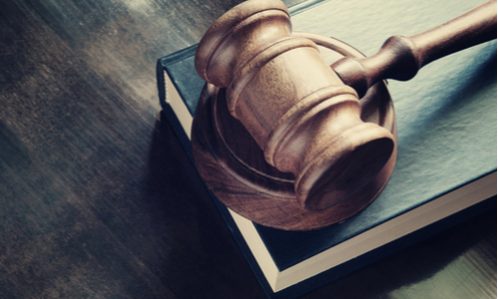
By: Robert Connolly (Cartel Capers)
It has become common for defendants indicted on criminal antitrust charges to argue that the use of the per se rule in their trial is unconstitutional. The United States, however, has beaten back each attack with ample precedent from the relevant court of appeals fortified with long standing Supreme Court precedent (i.e. Trenton Potteries and Socony Vacuum) that hold that price fixing is a per se Sherman Act violation.
In one per se challenge before the Ninth Circuit a panel member was sympathetic to defendants’ position and noted: “I think if it’s going to get straightened out [whether the per se rule is constitutional] it’s going to have to require an en banc panel of this court or more likely the Supreme Court itself.” Joshua Sisco, Mlex, January 16, 2019 “In foreclosure auction appeal, court questions applicability of per se standard, (behind pay firewall)]. The Ninth Circuit turned back the per se challenge in that appeal and Supreme Court denied certiorari. Sanchez et al. v. United States,140 S. Ct. 2655 (2020)(cert petition denied, January 13, 2020). Just recently the Supreme Court had another chance to review the constitutionality of the per se rule in a criminal antitrust case. Christopher Lischewski was convicted at trial of conspiring to fix the price of canned tuna. Lischewski preserved his objection to the per se rule in his trial; his appeal was denied by the Ninth Circuit and he filed a petition for cert with the Supreme Court. The Supreme Court again denied a cert petition challenging the constitutionality of the per se rule in a criminal trial. Lischewski v. United States, No. 21-852 (May 2, 2022). The per se rule lives!
More challenges lie ahead, however, for the per se rule. On May 2, 2022 the Second Circuit released an opinion rejecting yet another challenge to the per se rule. U.S. v Aiyer, Case No. 20-3594 (2d Cir. May 02, 2022). Aiyer was convicted after trial for his participation in a conspiracy to fix prices and rig bids in connection with his trading activity in the foreign currency exchange market. The Second Circuit rejected various challenges Aiyer raised to the use of the per se rule in his criminal trial. As other defendants have, Aiyer argued that when the judge instructs the jury that the alleged agreement, if found, is a per se violation of the Sherman Act, the court takes away from the jury an element of the offense, namely whether the alleged agreement restrained trade. Aiyer also argued that the trial court, citing the per se rule, impermissibly prohibited him from offering evidence of the procompetitive effects of the alleged agreement.
It seems likely defendant Aiyer will file a cert petition with the Supreme Court. What are the odds the Court will review the per se rule in Aiyer’s case? Not good I would imagine with the Court having recently rejected two similar cert petitions. The best chance Aiyer may have for a grant of cert is that, without going into details, the FOREX market is more complicated than the real estate auction bid rigging conviction that was the subject of the cert petition in Sanchez or the garden variety price fixing agreement that was the subject of the Lischewski cert petition…
Featured News
Judge Appoints Law Firms to Lead Consumer Antitrust Litigation Against Apple
Dec 22, 2024 by
CPI
Epic Health Systems Seeks Dismissal of Antitrust Suit Filed by Particle Health
Dec 22, 2024 by
CPI
Qualcomm Secures Partial Victory in Licensing Dispute with Arm, Jury Splits on Key Issues
Dec 22, 2024 by
CPI
Google Proposes Revised Revenue-Sharing Limits Amid Antitrust Battle
Dec 22, 2024 by
CPI
Japan’s Antitrust Authority Expected to Sanction Google Over Monopoly Practices
Dec 22, 2024 by
CPI
Antitrust Mix by CPI
Antitrust Chronicle® – CRESSE Insights
Dec 19, 2024 by
CPI
Effective Interoperability in Mobile Ecosystems: EU Competition Law Versus Regulation
Dec 19, 2024 by
Giuseppe Colangelo
The Use of Empirical Evidence in Antitrust: Trends, Challenges, and a Path Forward
Dec 19, 2024 by
Eliana Garces
Some Empirical Evidence on the Role of Presumptions and Evidentiary Standards on Antitrust (Under)Enforcement: Is the EC’s New Communication on Art.102 in the Right Direction?
Dec 19, 2024 by
Yannis Katsoulacos
The EC’s Draft Guidelines on the Application of Article 102 TFEU: An Economic Perspective
Dec 19, 2024 by
Benoit Durand